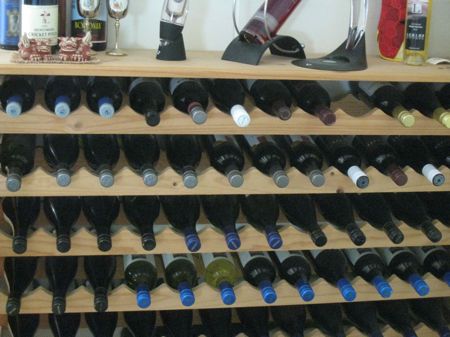Bargains

Having looked at the origins of the cleanskin phenomenon, let’s look at some of the other ways a winery can dispose of wine that’s sitting around taking up valuable space.
One way of doing that is to sell the bottle with someone else’s name on it, and it offers the option of selling it at something approaching the regular price if it’s being used to promote a business.
For example, a mate dropped off a bottle of Vintage Port a couple of years back, something he’d received as a Christmas present from a business he’s dealt with for a couple of years. The label identified it as coming from Tamburlaine in the Hunter Valley, and a quick Google revealed that you can order something along the same lines from an independent supplier for around $200/dozen, which is a little further up the market from cleanskin country.
And if you look around you there are plenty of restaurants and hotels that offer their own label wines, which have to come from somewhere. Along similar lines, various distributors in the liquor industry will buy and rebadge wines under their own private label.
Taking one example I’m reasonably familiar with, The Wine Society offers three Society label ranges - easy drinking selections around the $8-9 mark, a regional premium range in the mid- to high-teens and a premium selection above that. They’re all probably a couple of dollars cheaper that their brothers and sisters that sport the winery’s label, but you’d guess this rebadging yields higher returns to the winery than cleanskins do.
Apart from that sort of thing, the various wine clubs around the place also offer an avenue to move excess stock, in some cases significantly below Recommended Retail. A quick glance through the most recent newsletter from The Wine Society reveals a $25 cab merlot for $12.50 and a quality label Coonawarra shiraz not far off half price.
More...

